
Greenbrier County is a county in the U.S. state of West Virginia. As of the 2020 census, the population was 32,977. Its county seat is Lewisburg. The county was formed in 1778 from Botetourt and Montgomery counties in Virginia.
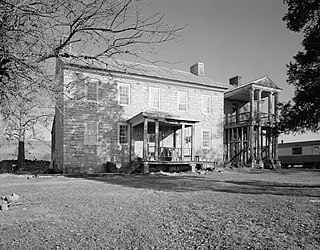
Falling Spring is a town in Greenbrier County, West Virginia, United States. It is also known as Renick from the name of its post office. The population was 171 at the 2020 census.

Lewisburg is a city in and the county seat of Greenbrier County, West Virginia, United States. The population was 3,930 at the 2020 census.
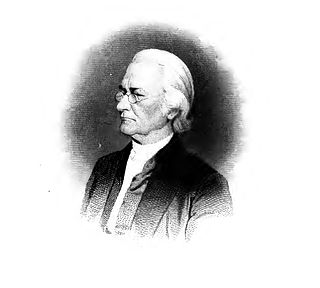
William Meade was an American Episcopal bishop, the third Bishop of Virginia.

The Battle of Droop Mountain occurred in Pocahontas County, West Virginia, on November 6, 1863, during the American Civil War. A Union brigade commanded by Brigadier General William W. Averell defeated a smaller Confederate force commanded by Brigadier General John Echols and Colonel William L. "Mudwall" Jackson. Confederate forces were driven from their breastworks on Droop Mountain, losing weapons and equipment. They escaped southward through Lewisburg, West Virginia; hours before a second Union force commanded by Brigadier General Alfred N. Duffié occupied the town.

Carnegie Hall, Inc. is a regional cultural center located in Lewisburg, West Virginia, United States. It is within the Allegheny Mountains. Monroe, Greenbrier, Pocahontas and Summers Counties are included in Carnegie Hall, Inc.’s primary service area. This region encompasses approximately 2,900 square miles (7,500 km2) and 73,000 people.
Colonel John Stuart was a Revolutionary War commander and pioneering western Virginia settler. A veteran of the Battle of Point Pleasant (1774), he surveyed and settled the Greenbrier Valley and is known locally as the "Father of Greenbrier County". Owing to his Memoir of Indian Wars and Other Occurrences, written in 1799, he has been called "the most important chronicler of pioneer history in southern West Virginia".

Henry Ruffner, was an educator and Presbyterian minister, who served as president of Washington College. Although a slaveholder, Ruffner became known for criticizing slavery as impeding Virginia's economic development before the American Civil War, although that controversial position caused him to resign his college presidency and retire to his farm.
Stone Manse is a historic manse located near Caldwell, Greenbrier County, West Virginia. It was built in 1796, and is a 2+1⁄2-story, gable roofed, Federal style dwelling. It was built using brown, red, and gray stones from the nearby Greenbrier River. A wood-frame addition was completed in 1833. The house served as the first manse of the Old Stone Presbyterian Church in Lewisburg and was originally the home of Reverend Benjamin Porter Grigsby, the congregation's second minister.
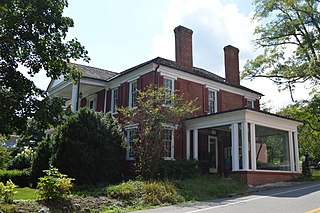
The John A. North House is a historic house museum and archives located in Lewisburg, Greenbrier County, West Virginia. Currently, the North House is Greenbrier County's only historic house museum. Since 1976, The Greenbrier Historical Society has operated within the North House, and in 1992 the North House was officially purchased by the Greenbrier Historical Society. In 1992, the home officially became known as "North House Museum, Greenbrier Historical Society."
Stuart Manor is a private historic home located near Lewisburg, Greenbrier County, West Virginia. The manor house was built in 1789. It is a long and low, two-story limestone building. It features thick gray walls and has a fort-like appearance. A two-story stone wing was added later, as were a number of frame additions. It features a verandah along two sides of the older wing. Also on the property is a one-room stone building built in 1778 and served as the county clerk's office for many years. The manor was home to Colonel John Stuart, considered the "Founder and Father of Greenbrier County." In 1884, "Gov." Samuel Price was interred in the Stuart Burying Ground.
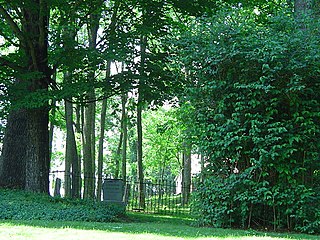
Confederate Cemetery at Lewisburg is a historic cemetery located at Lewisburg, Greenbrier County, West Virginia. The cemetery is the final resting place of 95 unknown Confederate soldiers from the Battles of Lewisburg and Droop Mountain. They are buried in a three-foot-high mound shaped as a Christian cross. The cross measures 80 feet, 5 inches in length, with the "arm" extending 53 feet. There are four commemorative monuments, including one installed by the Federal government in 1956. It is enclosed by a six-foot-high wrought iron fence.

Greenbrier County Courthouse is a historic courthouse building located at Lewisburg, Greenbrier County, West Virginia. In 1973 the courthouse and the adjacent spring house, the Lewis Spring, were listed on the National Register of Historic Places. and are a historic and

Lewisburg Historic District is a national historic district located at Lewisburg, Greenbrier County, West Virginia. The district encompasses 112 contributing buildings and are representative of the development and evolution of Lewisburg, over a period of more than two centuries (1763-1977). Notable buildings include log cabins dating to the period 1755–1769, "The Barracks," Mount Esperance (1814), Williams-Henning Store/house (1814-1820), Welch-Bell House (1824), John W. Dunn House, John Withrow's Store/ House (1836), Greenbrier Valley Bank Building (1897), and Carnegie Hall (1902). Located in the district and separately listed are the Old Stone Church, Greenbrier County Courthouse and Lewis Spring, John Wesley Methodist Church, Gov. Samuel Price House, Mt. Tabor Baptist Church, Supreme Court Library Building, James Withrow House, and John A. North House.

Alexander Ferdinand Mathews was an American lawyer, banker, and university board director in the U.S. State of West Virginia. He served as a Confederate officer and aide-de-camp to Brigadier General Henry A. Wise during the American Civil War.

Mason Mathews was an American merchant and politician in the U.S. State of Virginia. He served in the Virginia House of Delegates, representing Greenbrier County from 1859–1865 as a Whig. This period included the secession of Virginia and the resulting American Civil War of 1861–1865. Though Mathews opposed secession, he chose to support the Confederate States of America when Virginia seceded. Throughout the war, much of his efforts were directed toward the Confederate defense of western Virginia. When his home of Greenbrier County was taken into the new State of West Virginia in 1863, he continued to represent Greenbrier County in Virginia's Confederate legislature in Richmond until war's end. He was a member of the Mathews political family.
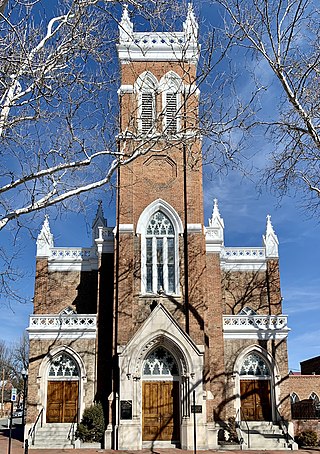
Christ Church, or Christ Episcopal Church, is an Anglican church in Winchester, Frederick County, Virginia. The church was founded in 1738, with its first vestry elected in 1742. It is the seat of Frederick Parish, Diocese of Virginia, which once covered half of the Shenandoah Valley and western Virginia, including what became West Virginia. The current church building, the parish's third, was designed by Robert Mills - it was completed in 1828, and is the oldest church building continuously used for religious purposes in the county. It is a contributing building in the local Historic District which predates the National Register of Historic Places, and which has been expanded three times since 1980.

Greenbrier College was a women's college in Lewisburg, West Virginia in the United States from 1812 to 1972. It started as Lewisburg Academy and when the school closed during the American Civil War, it reopened in 1875 it split into two schools: the Greenbrier College for Women and the Greenbrier Military School. The Greenbrier College also went by the Lewisburg Female Institute and Lewisburg Female Seminary.

The Battle of Lewisburg occurred in Greenbrier County, Virginia, on May 23, 1862, during the American Civil War. A Union brigade commanded by Colonel George Crook soundly defeated a larger Confederate force commanded by Brigadier General Henry Heth. Panicked Confederate forces escaped by crossing and burning a bridge across the Greenbrier River.




















